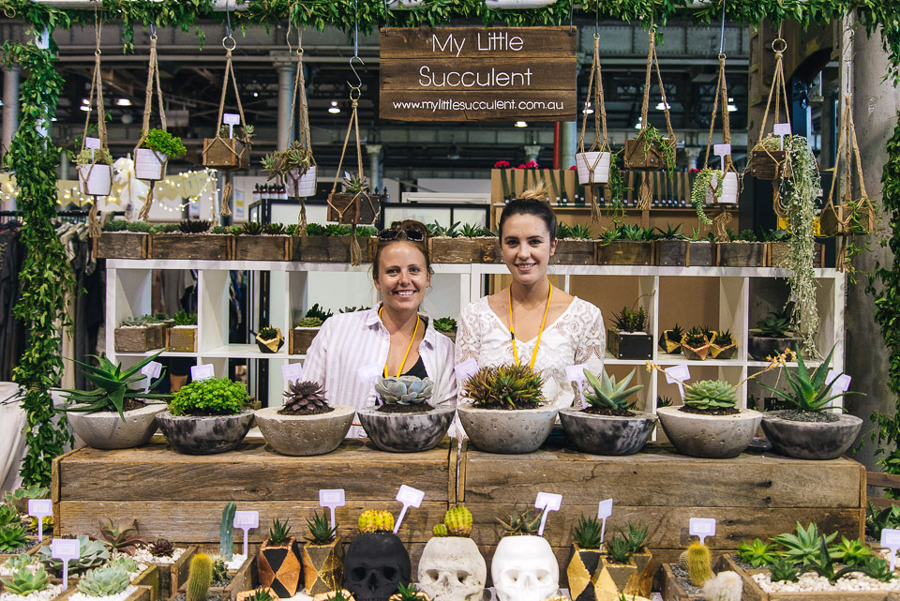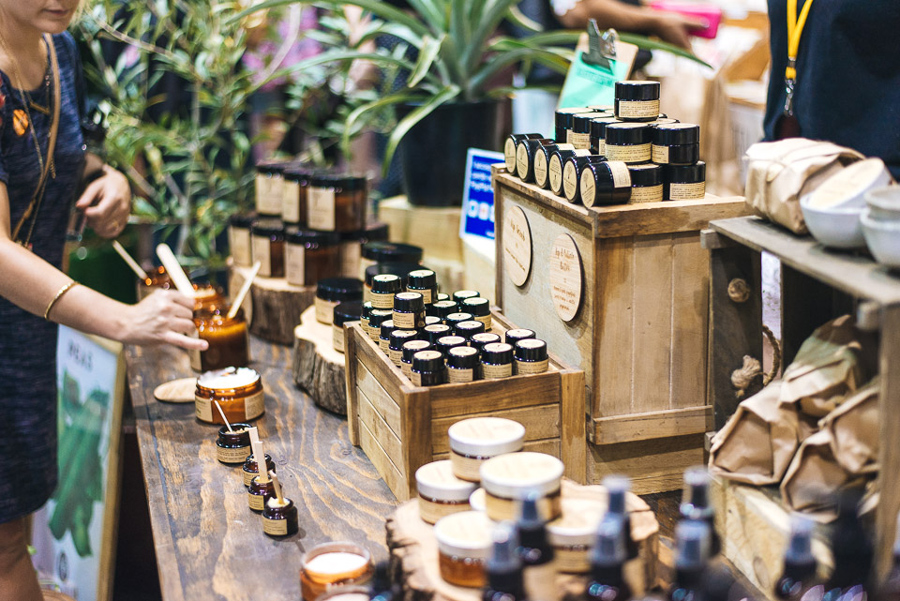THE FINDERS KEEPERS. NOVEMBER 2016.
FIVE WAYS TO CONSIDER THE ENVIRONMENT WHEN DESIGNING YOUR MARKET STALL
By Liane Rossler for The Finders Keepers
If you have created something yourself, you’re already on the road to greening your stall. Think of all the resources you have saved in transportation alone. You’ve designed something to be valued and treasured and enjoyed. It’s wonderful to make something beautiful and useful and even better when it leaves a light footprint on the planet, because we all want to live in a beautiful place as well as have beautiful things.
Think about your ingredients. What goes into creating your stall? The raw materials, the design process, the creation and making, the sale, the use, the life of the product and the afterlife. There is no ‘away’. Everything goes somewhere. Limit your waste, choose ingredients that have been created with a limited impact or that offer a long life.
Natural materials have a lower impact and can often be recycled. Synthetic fibres can break down in the wash and enter the oceans as microfibres which aren’t so nice for the fish to eat. Chose local materials if possible and ask your suppliers where something comes from. If they don’t know, it may prompt them to find an answer, and encourage them to be responsible for what they are selling.
Design with minimal waste in mind; the process as well as the materials. Think about the energy efficiency in your workplace, and use recycled paper products where possible. We need all the trees we can get. Minimise your plastic and utilise reusable containers rather than disposable. It’s crazy when you think we dig up oil that has been buried for millions of years, process it and ship it and manufacture it into plastic something that is then thrown away in a couple of seconds. Work to minimise unnecessary transport associated with production. Use minimal or reusable packaging.
Consider what your display is made from – are you able to reuse any elements? Share. Be resourceful and creative. Think about what you can do with the display in the future. Try not to create things for that will only end up in landfill.
Buy from local suppliers if possible. Your money is a powerful vote to support the businesses you wish to, who are also considering the environment..
Green Resources
You can use an energy supplier like Powershop which reinvests in renewable energy and was just voted Greenest Power Company.
You can offset carbon emissions with a company such as Climate Friendly, so that your work or project is carbon neutral. The company invests in projects that benefit the planet.
1 million women offers many, many tips in this field. If 1 million women each saved one tonne of carbon that creates a big impact.
Clean Cut is an Australian ethical and sustainable fashion association.
City of Sydney or your local council offer a great selection of environmental and sustainability resources including Green Villages
Ethical Fashion Australia have a Facebook page to share news and events and resources.
Makerspace&Co has spaces and tools and courses available for a diverse range of practices.
Held on the first Tuesday of the month, GreenUps has lots of great talks and events
Learn about the Life Cycle and how to innovate for the future with Cradle to Cradle and watch Waste = Food about materials transformation.
Ecoturre is a guide to sustainable, organic and ethical fashion and beauty.
Great news on environment, architecture, design and innovation at Inhabitat.
What is the actual cost of a cheap item? Great video by The Story of Stuff.
Have a look at the images, not only the numbers of our consumption. Chris Jordan’s great ‘Running the Numbers‘ series.






